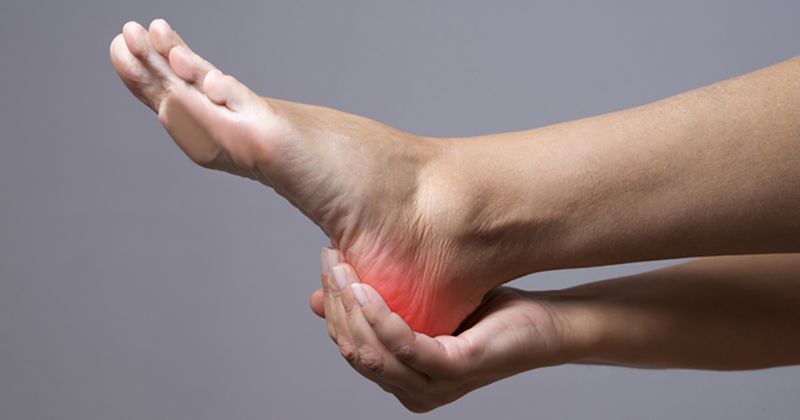Infection
Guidance updated for management, prevention of diabetes-related foot diseases
October 06, 2023
3 min read
Source/Disclosures
Published by:
Disclosures:
The authors report no relevant financial disclosures.
Key takeaways:
- The new guidance is an update to the 2019 International Working Group on the Diabetic Foot guidelines.
- These guidelines include guidance for antimicrobial therapy and determining infection.
The International Working Group on the Diabetic Foot, or IWGDF, recently published updated guidance on the management and prevention of diabetes-related foot diseases.
In the guidance, which provides evidence-based updates to IWGDF guidelines published in 2019, the authors provide updates on the diagnosis and management of foot infections in patients with diabetes mellitus.
Healio spoke with Éric Senneville, MD, PhD, infectious disease specialist at Gustave Dron Hospital, for more details on what the updated guidelines include.
Healio: Do the new guidelines separate diabetic foot osteomyelitis into its own category?
Sonneville: Yes.
Healio: What are the major changes since the last time the guidelines were updated?
Senneville: Consider a duration of up to 3 weeks of antibiotic therapy after minor amputation for diabetes-related osteomyelitis of the foot and positive bone margin culture and 6 weeks for diabetes-related foot osteomyelitis without bone resection or amputation.
Use the outcome at a minimum follow-up duration of 6 months after the end of the antibiotic therapy to diagnose remission of diabetes-related osteomyelitis of the foot.
Consider performing surgical resection of infected bone combined with systemic antibiotics in a person with diabetes-related osteomyelitis of the foot.
Consider antibiotic treatment without surgery in case of forefoot osteomyelitis without an immediate need for incision and drainage to control infection, and without peripheral artery disease, and without exposed bone.
Healio: How are infections distinguished from uninfected wounds?
Senneville: The distinction is based on clinical assessment. [Wounds are considered infected when] at least two of these items are present with no other cause of an inflammatory response of the skin:
- Local swelling or induration
- Erythema greater than 0.5 but less than 2 cmb around the wound
- Local tenderness or pain
- Local increased warmth
- Purulent discharge
Healio: How can a clinician assess the severity of an infection, and which patients should be escalated to more urgent care?
Senneville: Infection with no systemic manifestations and involving erythema extending 2 cmb or more from the wound margin, and/or tissue deeper than skin and subcutaneous tissues (eg, tendon, muscle, joint, and bone), and infection involving bone (osteomyelitis) are considered moderate.
Any foot infection with associated systemic manifestations (of the systemic inflammatory response syndrome), as manifested by any two or more symptoms including having a temperature of greater than 38°C or less than 36°C; heart rate of greater than 90 beats per minute; respiratory rate of more than 20 breaths per minute or PaCO2 less than 4.3 kPa (32 mmHg); white blood cell count higher than 12,000/mm3, lower than 4G/L, or higher than 10% immature (band) forms; and infection involving bone (osteomyelitis), are considered severe.
Healio: How can clinicians select antimicrobial therapy for their patients?
Senneville: In the great majority of cases, obtaining a specimen (after cleansing and debridement and trying to avoid contamination) for culture from a diabetes-related foot infection provides useful information on the causative pathogen(s) and their antibiotic susceptibility, allowing appropriate selection of antibiotic therapy. In cases of an acute, nonsevere diabetes-related foot infection in a patient who has not recently received antibiotic therapy and has no other risk factors for unusual or antibiotic-resistant pathogens (eg, based on specific exposures or previous culture results), selecting empiric therapy without culture may be reasonable. In other situations, despite superficial swabs being easier to perform, we advise collecting a soft tissue specimen.
Healio: At what point is surgery recommended?
Senneville: Urgent surgical consultation should be obtained in cases of severe infection or moderate diabetes-related foot infection complicated by extensive gangrene, necrotizing infection, signs suggesting deep (below the fascia) abscess, compartment syndrome or severe lower limb ischemia. Consider performing early (within 24 to 48 hours) surgery combined with antibiotics for moderate and severe diabetes-related foot infections to remove infected and necrotic tissue. Consider performing surgical resection of infected bone combined with systemic antibiotics in a person with diabetes-related osteomyelitis of the foot and antibiotic treatment without surgery in case of forefoot osteomyelitis without an immediate need for incision and drainage to control infection, and without peripheral artery disease, and without exposed bone.

